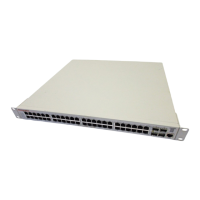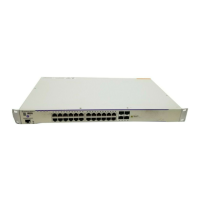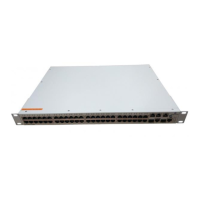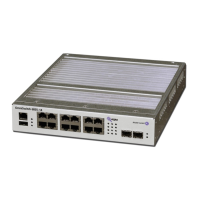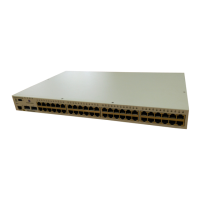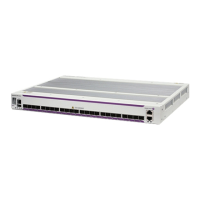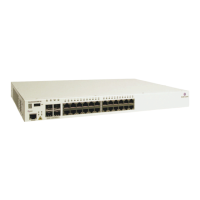Configuring IP IP Overview
OmniSwitch AOS Release 8 Network Configuration Guide December 2017 page 15-4
6 Create an IP interface on VLAN 20 using the ip interface command. For example:
-> ip interface vlan-20 address 171.11.1.1 vlan 20
IP Overview
IP is a network-layer (Layer 3) protocol that contains addressing and control information that enables
packets to be forwarded on a network. IP is the primary network-layer protocol in the Internet protocol
suite. Along with TCP, IP represents the heart of the Internet protocols.
IP Protocols
IP is associated with Layer 3 and Layer 4 protocols. These protocols are built into the base code loaded on
the switch. A brief overview of the supported IP protocols is described in the following sections.
Transport Protocols
IP is both connectionless (it forwards each datagram separately) and unreliable (it does not guarantee
delivery of datagrams). This means that a datagram can be damaged in transit, thrown away by a busy
switch, or never make it to its destination. The resolution of these transit problems is to use a Layer 4
transport protocol, such as:
• TCP—A major data transport mechanism that provides reliable, connection-oriented, full-duplex data
streams. While the role of TCP is to add reliability to IP, TCP relies upon IP to do the actual delivering
of datagrams.
• UDP—A secondary transport-layer protocol that uses IP for delivery. UDP is not connection-oriented
and does not provide reliable end-to-end delivery of datagrams. Few applications can safely use UDP
to send datagrams that do not require the extra overhead added by TCP. For more information on UDP,
see Chapter 21, “Configuring DHCP Relay.”
Application-Layer Protocols
Application-layer protocols are used for switch configuration and management:
• Bootstrap Protocol (BOOTP)/Dynamic Host Configuration Protocol (DHCP)—can be used by an end
station to obtain an IP address. The switch provides a DHCP Relay that allows BOOTP requests/replies
to cross different networks.
• Simple Network Management Protocol (SNMP)—Allows communication between SNMP managers
and SNMP agents on an IP network. Network administrators use SNMP to monitor network
performance and manage network resources. For more information, see the “Using SNMP” chapter in
the OmniSwitch AOS Release 8 Switch Management Guide.
• Telnet—Used for remote connections to a device. You can telnet to a switch and configure the switch
and the network by using the CLI.
• SSH—Used for remote connections to a device. You can SSH to a switch and configure the switch and
the network by using the CLI.
Note. See Chapter 4, “Configuring VLANs,” for more information about how to create VLANs.

